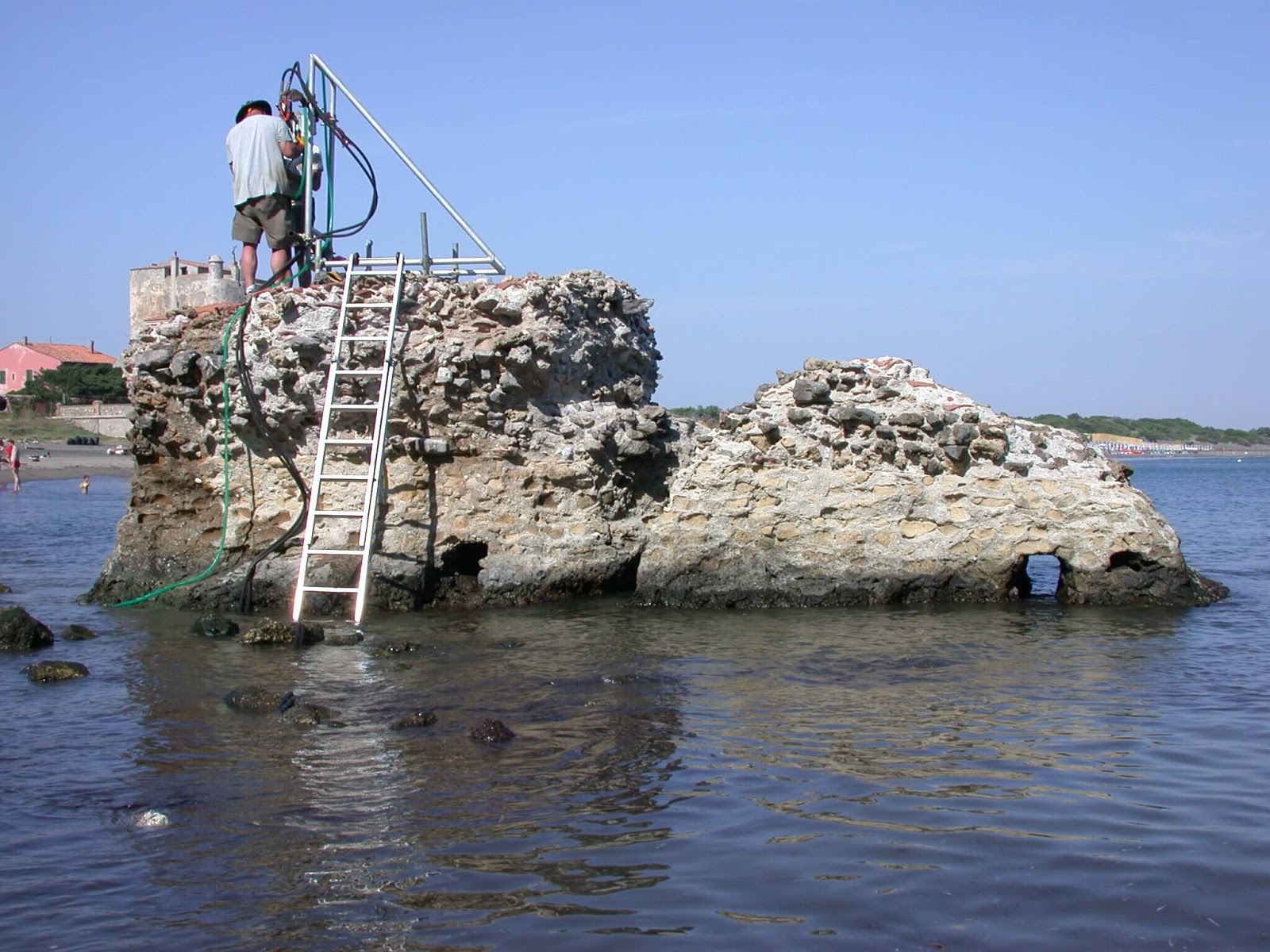 RPBaiao/Shutterstock
RPBaiao/ShutterstockOne of the amazing mysteries of Ancient Rome is the incredible longevity of some of their concrete harbor structures. Battered by sea waves for approximately 2,000 years, they're still around while modern concoctions erode over only some decades.
Scientists have now discovered the chemistry behind this unbelievable phenomenon, and they're getting closer to unlocking its old, long-lost recipe. As it's proven, Roman concrete is way more durable than what we can make nowadays, and it also gets stronger over time.
Researchers led by geologist Marie Jackson from the University of Utah have mapped Roman concrete's crystalline structure and figured out how exactly this ancient material solidifies over time.
Modern concrete is created with portland cement, which is a mixture of silica sand, clay, chalk, limestone, and other ingredients melted together at blistering temperatures. In concrete, this paste binds 'aggregate' - chunks of rock and sand.
This aggregate has to be inert since any unwanted chemical reaction could cause cracks in the concrete and lead to erosion and crumbling of the structures. That's why concrete doesn't have the impressive longevity of natural rocks.
Nevertheless, Roman concrete works in a totally different way.
It was created with volcanic ash, lime, and seawater; Romans might actually have observed a similar chemical reaction Romans in tuff rocks (naturally cemented volcanic ash deposits).
Mixed in with the volcanic ash, mortar was a more volcanic rock as aggregate, which would then keep on reacting with the material, making Roman cement far more durable than what you'd think it could be.
In a former research project led by Jackson, samples of Roman marine concrete were already gathered from various ports along the Italian coast.

Drilling for Roman concrete samples in Tuscany, 2003. Photo: J. P. Oleson
Now the researchers mapped the samples by using an electron microscope before they drill down to an extremely high resolution with X-ray microdiffraction and Raman spectroscopy. These advanced techniques could help them identify all the mineral grains produced in the ancient concrete over the centuries.
According to Jackson:
"We can go into the tiny natural laboratories in the concrete, map the minerals that are present, the succession of the crystals that occur, and their crystallographic properties. It's been astounding what we've been able to find."
Jackson was interested in the presence of aluminous tobermorite, a hardy silica-based mineral which is rare to find and difficult to create in the lab still is abundant in the ancient concrete.
It turned out that aluminous tobermorite, as well as a related mineral named phillipsite, grows in the concrete because of the sea water sloshing around it. The water slowly dissolves the volcanic ash within and gives it space to develop a reinforced structure by these interlocking crystals.
Making concrete, the way Romans used to once would be a boon to the modern building industry. Imagine when it comes to coastal structures, such as piers that are continually battered by the waves, or fancy tidal lagoons to harness energy from waves.
Unfortunately, these recipes have been lost in the past, so our only chance at remaking the ancient material would be to reverse-engineer it based on what scientists already know about its chemical properties.
It's not like we could replace all the world's cement with this historical stuff, since not everywhere could we access the right volcanic ingredients.
Nevertheless, if Jackson and her team can crack the recipe, contemporary marine engineers could possibly tap into the potential of a material which doesn't need steel reinforcements, could last for centuries and, also, makes fewer carbon emissions to boot.
The study was published in American Mineralogist.
Reference: Science Alert












If they can crack the recipe, contemporary marine engineers could possibly tap into the potential of a material that could last for centuries!
ReplyDeletebullet force
Romans were extremely evolved as empire two thousand years ago, they were building using reinforced concrete, which obviously is up even today.
ReplyDeleteJust imagine what would they do and accomplish being aware of the power of the atom.
I read on https://www.alternative-energies.net/pros-and-cons-of-nuclear-energy-aen-news/ that nuclear energy has the highest energy density among the known sources of power (fossil or renewable), so you can only imagine what would the Roman Empire do controlling such an amazing force.
Aptoide
ReplyDeleteShowBox
3DS Emulator
I would like to thank you for the efforts you have made in writing this article. I am hoping the same best work for you in the future as well. Thanks.
ReplyDeleteCisco Customer Service
The article you shared here is awesome. I really like and appreciate your work.
ReplyDeleteusps tracking
I just read your blog this blog is value able and great
ReplyDeletehttps://shehrozpc.com/avast-cleanup-activation-code/
great article i just read your article
ReplyDeletehttps://letcracks.com/adobe-photoshop-cc-2020-crack-serial-torrent/
Hey There hope you are fine The article you shared this article is great
ReplyDeletehttps://zsactivationkey.com/fl-studio-20-crack-reg-key-april/
Nice Bro this article is awesome
ReplyDeletehttps://chserialkey.com/adobe-photoshop-cc-2020-cracked-torrent/
This blog is great i like your blog keep it up bro
ReplyDeletehttps://cracksmad.com/vce-exam-simulator-crack/